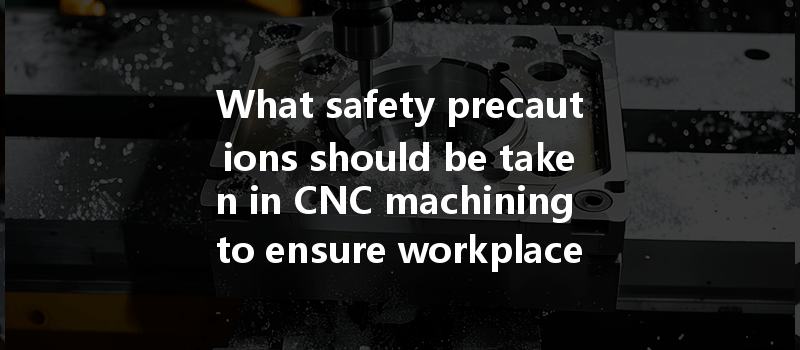: The Importance of Safety in CNC Machining
Did you know that workplace injuries account for over 2.8 million incidents in the United States alone each year? In industries involving precise machinery like CNC (Computer Numerical Control) machining, safety isn’t just a procedure—it’s a paramount principle that can save lives and safeguard the quality of production. CNC machines are invaluable assets in manufacturing processes, but without proper safety precautions, they can pose significant risks to operators and other personnel. This blog aims to provide a comprehensive understanding of safety precautions that should be taken in CNC machining, ensuring both the safety of workers and the efficiency of production.
CNC machining involves the use of computerized controls to operate mechanical tools. CNC machines can manipulate various materials such as metal, wood, and plastics with great precision. However, the sophistication of these machines doesn’t eliminate hazards. Common risks associated with CNC machining include:
Given these risks, implementing safety precautions is not just advisable—it’s essential.
To address the inherent dangers associated with CNC machining, organizations must establish comprehensive safety protocols. Here’s a structured solution detailing several key precautions:
2.1 Employee Training and Certification
One of the most effective ways of ensuring safety in CNC machining is through rigorous training programs. Employees should receive thorough training that covers:
An effective training program ensures that workers are not only familiar with individual tasks but are also aware of potential safety concerns.
2.2 Use of Personal Protective Equipment (PPE)
The use of PPE is critical in reducing worker exposure to various hazards. Essential PPE for CNC machining might include:
Employers must enforce the use of PPE and ensure that it is available and compliant with industry standards.
2.3 Regular Maintenance and Inspection of Machines
Routine maintenance can prevent accidents caused by equipment malfunction. Establishing a schedule for inspections and necessary repairs should cover:

Regular maintenance not only enhances safety but also prolongs the life of the machinery.
2.4 Safe Work Environment
Creating a safe work environment is about more than just machines; it encompasses the entire workspace. Implement these changes to foster safety:
A safe environment enables employees to focus on their work without distraction or fear of accidents.
2.5 Establishment of Safety Protocols and Emergency Protocols
Every workplace should have explicit safety protocols and emergency procedures in place. These should include:
Implementing these protocols and ensuring that all employees understand them can significantly mitigate risks.
As technology advances, so do safety solutions. Consider investing in advanced safety technologies that can enhance workplace safety:
3.1 Machine Safety Sensors
Modern CNC machines can incorporate sensors that shut down operation in the event of unexpected movement or obstructions. These sensors improve response times to potential accidents.
3.2 Surveillance Systems
Installing cameras not only enhances security but also allows for the monitoring of operations. Surveillance can help to ensure adherence to safety practices and provide insight into areas needing improvement.
3.3 Ergonomic Design
Ensuring that CNC machines and workstations are ergonomically designed can significantly reduce fatigue and decrease the likelihood of musculoskeletal injuries. Adjustable features can be implemented to accommodate workers of different heights and strengths.
In summary, ensuring safety in CNC machining is not merely a compliance issue; it is essential for the well-being of workers, the quality of the produced products, and the efficiency of operations. By implementing rigorous training, providing the right PPE, maintaining machines properly, fostering safe work environments, and utilizing advanced technologies, manufacturers can substantially reduce the risk of accidents and injuries.
This blog illustrates critical safety measures that can facilitate a secure and efficient CNC machining environment. As you reflect on these guidelines, remember that safety should not be viewed as a burden but rather as a necessary investment in the sustainability of your workforce and production quality. A commitment to safety reinforces trust in your company and ensures that both workers and machines can perform optimally, paving the way for success in the competitive landscape of modern manufacturing.
Make safety a cornerstone of your CNC machining operations, and you’ll not only protect your workers but also enhance productivity and quality—creating an environment where everyone thrives.






